Category: Hunting Blog
White-tailed Deer Movement During The Rut
The anticipation is almost too much to bear. I’ve waited so long for this time of year and it’s almost here! Finally! The rut is something every deer hunter gets excited about and for good reason. Bucks move more during the next month than the rest of the year. It’s an exceptional time of year to be in the woods. Knowing they will be moving more, hunters should capitalize on this movement.
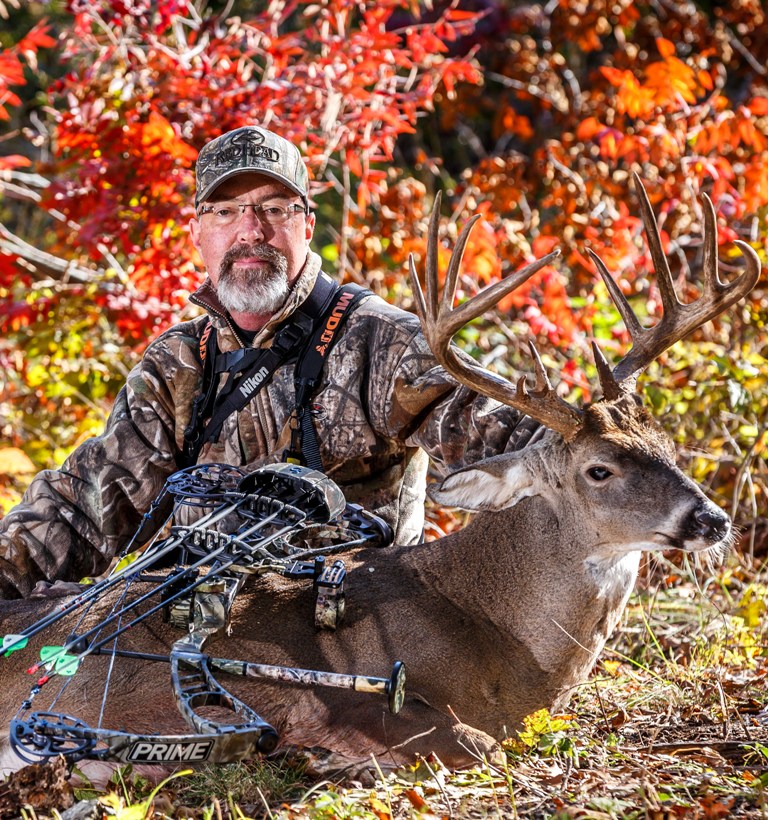
Grant with a great buck he took while hunting a travel corridor during late October!
Recently I read a blog out of Penn State about a research team that placed a radio collar on an adult buck in the spring of 2013. They monitored him through the course of two hunting seasons on a state forest that’s open to public hunting. They studied this buck’s movements throughout the year paying close attention during October and November. Out of all the interesting information they found, one point grabbed my attention. During a 24 day period in October and the first few days of November this buck traveled 23 total miles. For the next 24 days (November 4th through the 27th) he traveled 85 miles! WOW! This is a great example of the amount of traveling adult bucks will do during the rut.
As hunters we can use this knowledge to our advantage when we consider how bucks will be traveling during the month of November. Bottlenecks, pinch points, and travel corridors are all great places to hunt. Over the next couple weeks the rut will start to pick up and it’s a great time to hunt these areas!
To read more about the findings out of Penn State check out this link.
Don’t miss out on one of the best times of the year to hunt!
Daydreaming of whitetails,
Adam
Beginning To Hunt Scrapes
Its now mid-October and fall is all around us. I like cool mornings on the stand because they bring a feeling of rejuvenation to the season. Cooler temperatures also mean it’s time to hunt scrapes! Scraping activity is increasing quickly.
In preparation for hunting scrapes, we key into the locations that have scrapes year after year. Scrapes act as communication points for deer within an area. Commonly seen on trail cameras, a deer will urinate on their tarsal gland which personalizes the mark that they leave in the scrape. The urine comes in contact with bacteria located on the deer’s glands which are unique to that specific deer and distinguishable among the herd. The urine then falls into the scrape letting all the deer know who was working the scrape before them!
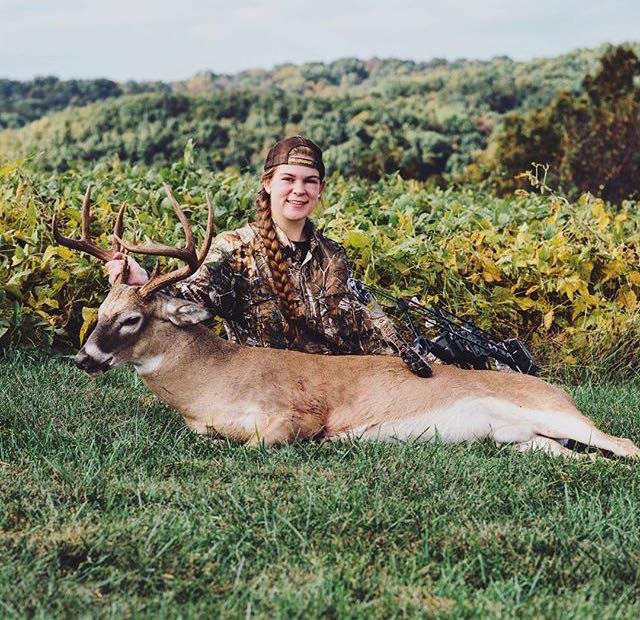
Raleigh just killed this mature buck on a ridge at The Proving Grounds that generally receives the first scraping activity each fall.
Peak scraping activity generally occurs two weeks prior to peak rut. That means at The Proving Grounds we will soon be setting up 20 feet above scrapes. Not just any scrape will work. To put the odds in our favor we will target scrapes that occur in the same location yearly, are in transition areas, and are located so we can access them from downwind. These areas are not as common as they may seem. Scouting and recording deer movement from year to year is vital. But once you find these areas they can be extremely productive when the pre-rut activity is at its highest.
Understanding biological changes that deer undergo throughout the length of the entire season will make you a better hunter. These changes will determine which stand you hunt and at what time of the year. From now until November we will monitor scrape activity very closely. When scraping activity is at its highest you can bet we will be in our Summit treestands!
Growing quality whitetails,
Matt
October Hunting Strategies
The middle of October can mean a lot of things for hunters throughout the whitetail’s range. For the GrowingDeer.tv Team it usually means we start adjusting our hunting strategies. Along with testosterone levels rising, deer behavior and their preferred food sources are changing. With these changes it’s important that we adjust our approach to coincide with deer movement.
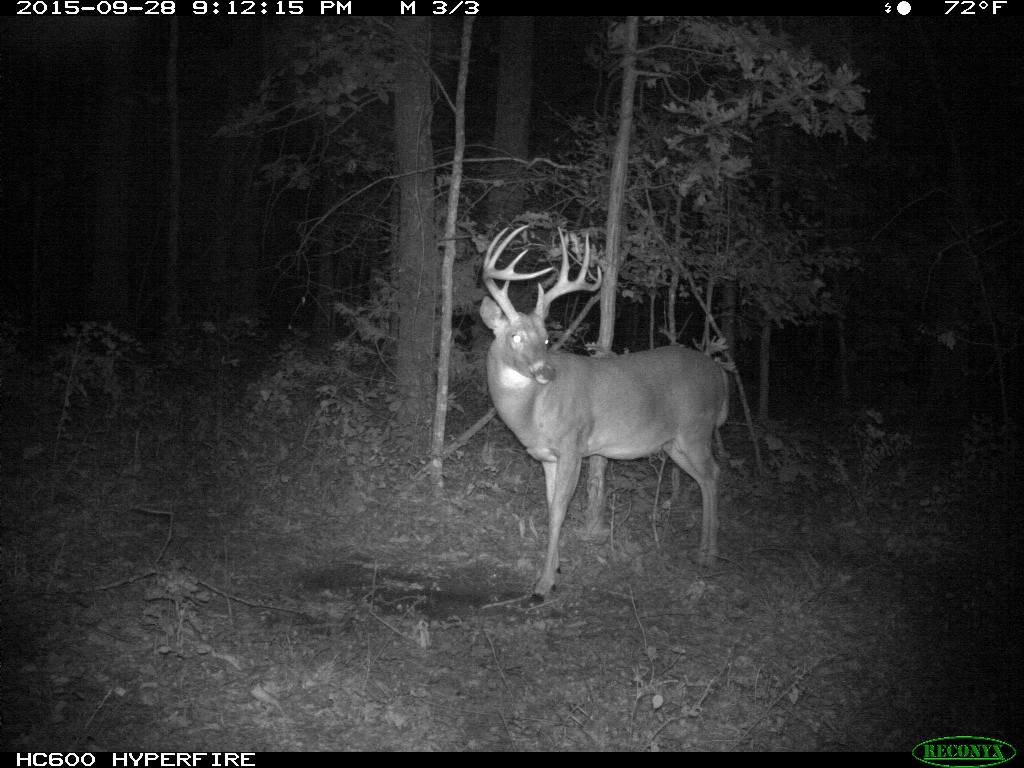
Swoops (pictured above) is a mature 9 point that Grant and I encountered opening day in a food plot. He is showing up on Reconyx trail camera images in an area dominated by oaks.
When season opens up in the middle of September we focus on food to cover setups. We’re usually hunting between bedding areas and an Eagle Seeds Broadside plot or a White Oak tree that’s one of the first to drop acorns in the area. Once October starts, more and more acorns have fallen and the deer spend more time in the timber. The disadvantage for us is nearly 80% of The Proving Grounds consists of timber and a large portion is oaks. This means acorns can be found in most places on the property. Instead of trying to find one tree the deer are utilizing, we must change our approach and start hunting bottlenecks and travel corridors. Finding a single tree that deer are using is almost impossible. Finding the bottleneck deer are using to get to those trees is something we can do!
Changing food sources during October is also something hunters in crop regions can relate to. A large portion of soybeans and corn will be removed during the fall causing drastic changes in deer movement. Successful hunters have to adjust their hunting strategies to correlate with the harvesting of crops.
Deer hunting strategies are ever changing throughout the fall. Don’t get caught using the same strategy throughout the season! It’s time to start focusing on hunting travel corridors and bottlenecks.
Daydreaming of whitetails,
Adam
How To Hunt Staging Areas
Staging areas are some of my favorite stand locations! I hunt most often at The Proving Grounds, in the Ozark Mountains of southern Missouri. The area is primarily timbered with few natural openings. In this type of habitat deer, including mature bucks, seem to readily use small openings before larger food plots, etc.
I’ve created several staging areas by clearing brush and trees. Some of these are simply nooks off larger food plots and some are 100 to 200 yards away from a primary feeding area. I often place Trophy Rock’s Four65 mineral in the staging area as well as maintain it in Eagle Seeds’ Broadside blend. I almost always create a mock scrape in the staging area also! This combination of mineral, forage that is attractive during the hunting season, and a mock scrape has proven extremely effective at attracting mature bucks during daylight hours.
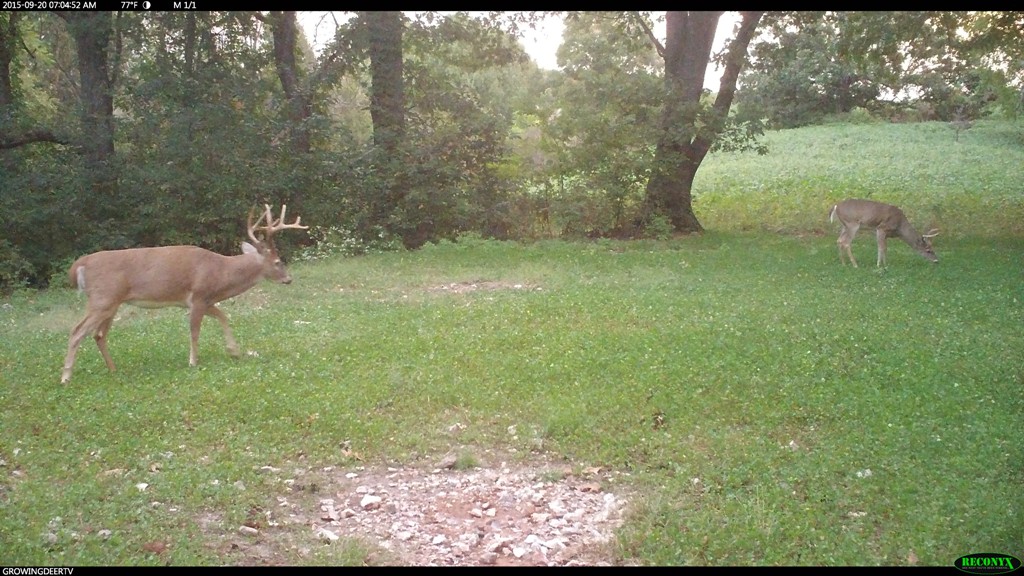
This is a buck we call King using a staging area before entering a large food plot.
It’s very important to find or create staging areas that allow hunters to approach without alerting deer. This means the approach, hunt, and exit need to occur so that deer in the local bedding and feeding areas won’t be downwind of the stand/blind location. This characteristic of staging areas is probably the most important determinant of its location!
Staging areas give hunters a big advantage that’s rarely discussed. Because staging areas are usually between primary bedding and feeding areas, it means deer are traveling through them. This means hunters can often approach staging areas before a morning hunt and/or leave them after an evening hunt without alerting deer. This is in contrast to hunting both bedding and feeding areas where it’s often difficult to approach during the morning or leave after a hunt without alerting deer. Therefore staging areas can often be hunted more frequently without “burning out” the stand.
I’ll be hunting staging areas this fall! Whether you find a natural staging area or establish one I hope you have an opportunity to hunt these great habitat features also!
Growing Deer together,
Grant
Deer Hunting: Beating The Heat
Fall is here and that means deer season! Many hunters have already had the opportunity to hit the woods. If your season has not yet opened or you are waiting for your first opportunity, chances are you are excited.
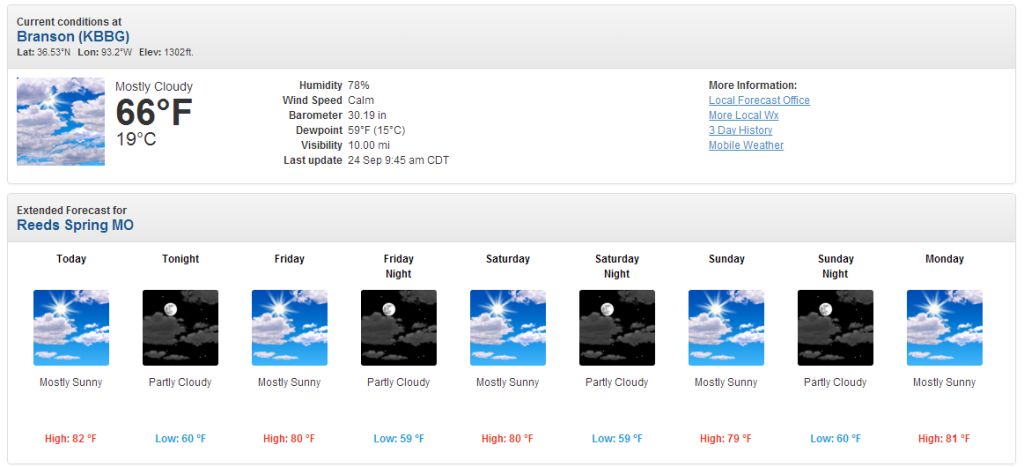
The forecast is calling for warm temperatures at The Proving Grounds. We will have to try to stay cool while hunting this week.
Unfortunately, early season hunting is usually paired with warm temperatures. If hunters do not adapt their hunting techniques for warm temperatures, they may regret it later. Hunters often wear long sleeve shirts and long pants and it doesn’t take long to begin sweating. Sweat smells and is hard to hide. As hunters, we want to reduce our scent while in the woods. Here are a few tips to help fight early season temperatures.
- Wear lightweight clothing. Breathable and vented clothes help keep your body temperature low.
- Wear a short sleeve shirt to the stand. Once you are in the stand, switch to a long sleeve shirt. Minimize scent by placing the short sleeve shirt in a gallon Ziploc® bag and store it in a backpack.
- Leave a few minutes early. Having extra time to walk slowly to the stand can help keep you cooler and reduce scent left in the woods.
- Use scent control. Spraying down with Dead Down Wind field spray before walking in can help control scent. Dead Down Wind field wipes are also nice to wipe down with after climbing into the stand
Even though conditions can make hunting the early season tricky, there are ways to tag that early season deer. Stay cool and enjoy getting back into the woods!
Managing whitetails with you,
Daniel Mallette
The Importance Of Scent Control
There are scent control products that range from clothes to laundry detergent all the way to toothpaste and hand sanitizer. You may ask, “Are all of these products truly necessary?” That depends on your goals. Look at the video below and pay attention to this buck’s behavior.
It is clear that this buck, Déjà vu, is scent checking the twigs and stems that are close to the camera. What the video does not show is our presence at this location a mere 16 hours earlier. We visited this camera to swap out memory cards. We may have left some scent on the trail and most likely on those twigs and stems that Déjà vu is inspecting so intently. Even after 16 hours of time this buck clearly still smells and recognizes foreign odors on the trail.
Now do you think all of those scent control product are necessary? If Déjà vu can smell the twig we rubbed against while checking this camera after 16 hours has passed, I can only presume that when I am hunting or making my way to and from the tree this same scenario can happen time and time again. It is important to remember that each time you are in the woods more scent is left behind. For these reasons the best opportunity to harvest mature bucks is often the first time you hunt a stand.
Remember to be intentional and deliberate every time you enter and exit the woods!
Growing deer together,
Matt Dye
Securing Your Saplings!
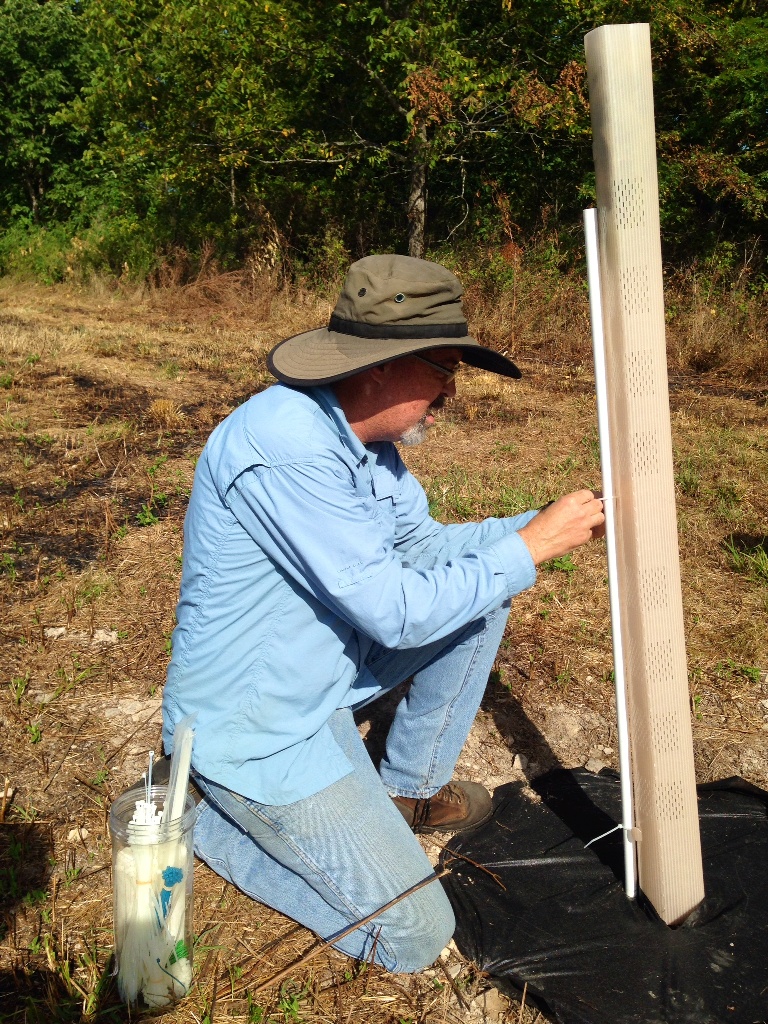
Ensure your saplings are tightly secured and enclosed, this will provide safety from bucks during this time of year.
As you put the final touches on your stand locations or tune your equipment for bow season, don’t forget to protect your investments!
Along with the opening of bow season, this time of year starts a new phenomenon in the world of whitetails. Bucks are beginning to leave more visible signs on your property. Testosterone levels in bucks are increasing and as a result rubs and scrapes are appearing.
If you have planted any tree saplings recently, I recommend you schedule a visit to these locations soon. Routine maintenance is necessary to ensure protection for these young trees. Any exposed saplings are prime targets for deer to rub. These young saplings can be severely damaged or even killed due to rubs. Aromatic trees such as fruit trees or cedars are highly sought after for bucks to rub (watch episode #277 here). This is due to the odor they produce once they are rubbed.
When you check your saplings make sure each tree sapling is staked properly and that each tree tube is securely attached, fully enclosing the sapling. This will deter any bucks using the area from rubbing and damaging your planted saplings, ensuring the longevity of your investment for years to come!
Growing deer together,
Matt Dye
Deer Management 101 – Dead Deer Don’t Grow
Deer season is almost upon us! One thing I enjoy most while anticipating deer season is checking the Reconyx cameras and seeing what bucks are using the property. Doing this year after year, you begin to recognize bucks from prior years and observe their antler growth or decline. A buck we call, “Handy” has definitely been an eye catcher this year!
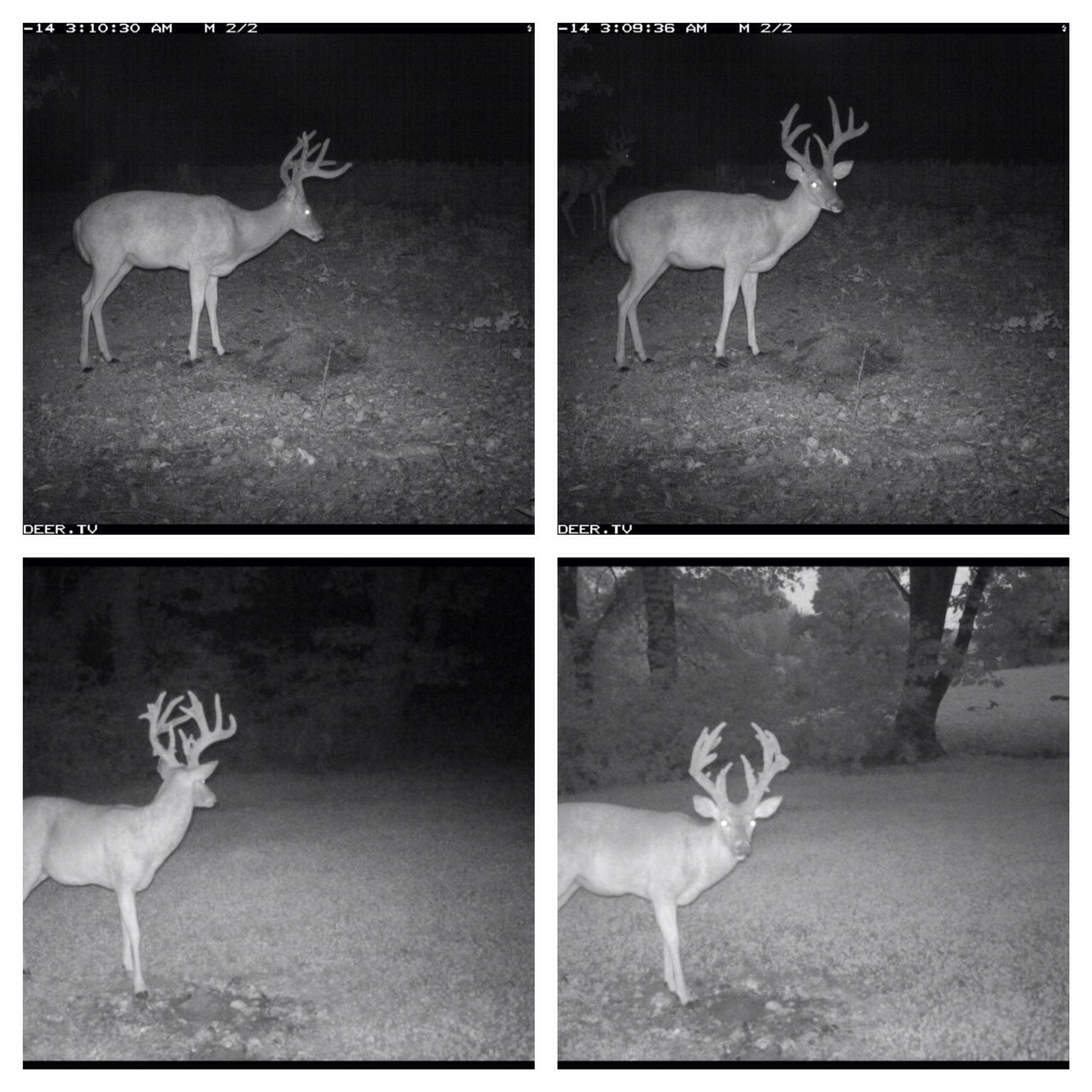
The difference a year makes! (Top) Handy as a 3.5 year old. (Bottom) Handy this year as a 4.5 year old.
Although we can‘t be absolutely certain it’s the same buck we feel very confident it is. Last year he showed up as a main frame 8 point with a couple of small sticker points and we estimated this buck to be 3.5 years old, which means he would get a pass if anyone laid eyes on him while hunting. Handy was very active last fall on our Reconyx cameras. I even had a nice encounter with him during the Missouri rifle season, but rules are rules, so I let him walk.
Fast Forward to this Summer –
July of 2015 was upon us and we were looking through the Reconyx cards to see who we recognized from last year. We were ecstatic when we found a buck that resembled Handy from the previous year. There are several reasons why we believe it’s the same buck. The sticker points are back on the same tines only bigger, the buck is living in the same area he was living last summer and overall the antler symmetry is very similar.
After seeing the amount of growth that Handy has put on in one year, I’m so happy I gave him a pass last fall. It’s not every day we are blessed enough to pass a buck, only to watch him turn into something significantly bigger. Hopefully we’ll get another look at him the coming weeks!
Daydreaming of whitetails,
Adam
2015 Pre Season Scouting
Adam, Daniel, and I have been scouting while doing field work. I’m a bit shocked that we are finding acorns on the ground already. Typically we don’t find acorns on the ground until late September. There are always a few acorns that were aborted, damaged by insects, etc., that fall early. We are finding good acorns along with hulls, scat, etc. Deer are clearly already eating acorns!
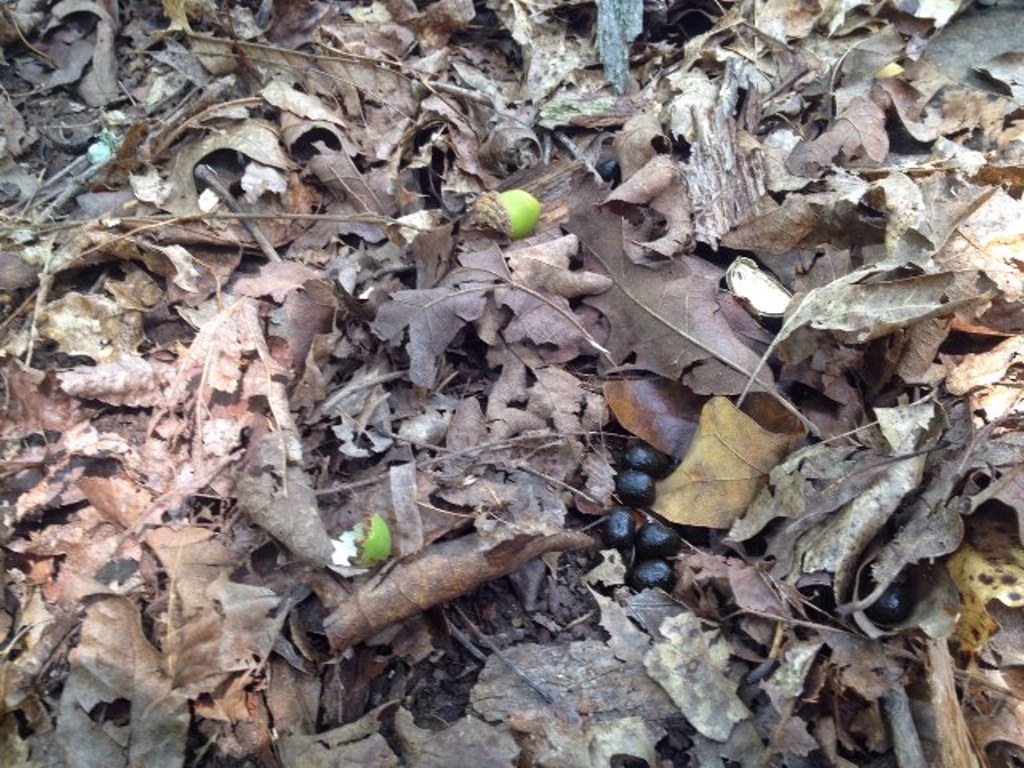
This year we are finding early acorns on the ground while scouting.
The Proving Grounds is primary forested. There are oaks everywhere! During years when there is a good acorn crop it can be very difficult to pattern deer because there’s food everywhere. In addition, if deer are alerted or spooked it is very easy for them to feed elsewhere given these conditions.
When these conditions occur hunters need to continue to scout for fresh sign and be very careful not to alert deer when entering, hunting, and exiting a stand.
We’ll keep you posted week by week about what we observe in the field and what strategies are working best.
GrowingDeer together,
Grant
Broadcasting Seed Or Why I Like Rain During August
I really like it when it rains during August! Let me explain. The average first frost date at The Proving Grounds is around October 10th. Most cool season crops do best when they are planted 45-60 days before the first frost. That means I need to plant during mid August at my place.
I often use the broadcasting technique to plant cool season blends such as Broadside. I frequently broadcast this blend into standing soybeans that have been heavily browsed. This technique works best if the seed makes seed to soil contact and has ample soil moisture to germinate and grow.
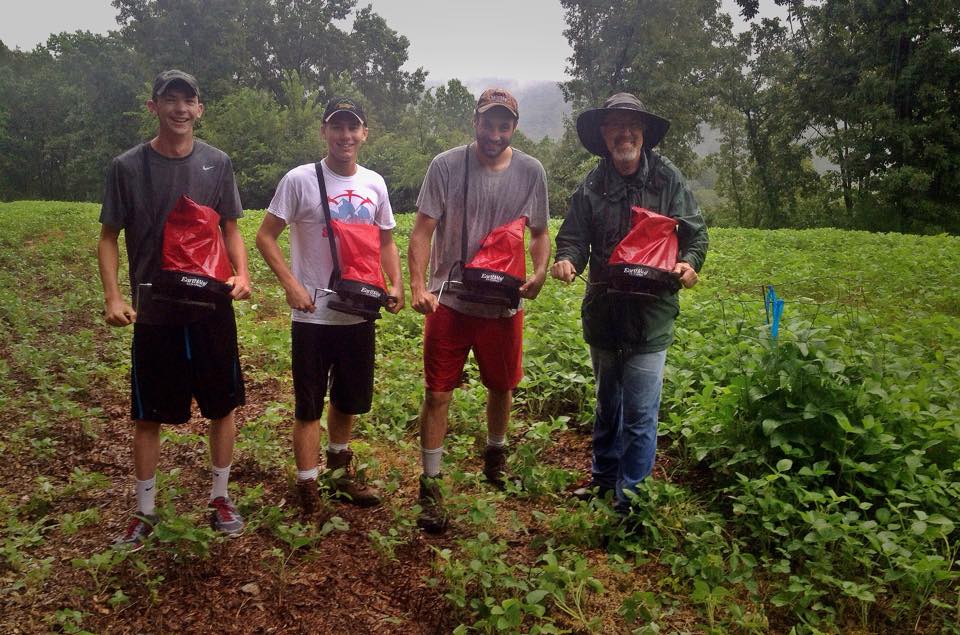
We had a busy morning in the rain broadcasting Eagle Seed Broadside.
If the seed is spread while it’s raining, the droplets will literally splash a fine layer of dirt over the seeds. There’s obviously ample soil moisture for the seeds to germinate. Spreading seed while it’s raining almost always results in a high germination rate!
There are some exceptions. Extremely hard rains may result in the seed being washed away if there’s runoff occurring. If the seed is planted in an area where weeds or other “duff” prevent the seed from contacting the soil it’s unlikely the young seedling will survive. This is because germinated seeds are like new babies. Once a baby or a seed’s roots come out both are hungry.
Seeds feed primarily by getting their itty bitty roots in the ground and absorbing nutrients. Rain can make this process much easier for young seedlings!
I really like it when it rains during August!
GrowingDeer together,
Grant



